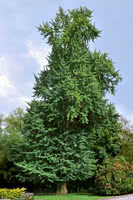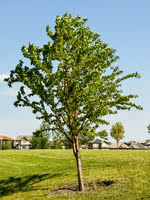Mon-Fri 9am - 5pm Mountain time
Ginkgo Biloba vs Amur Cherry
Ginkgo biloba
Prunus maackii
NOT AVAILABLE THIS SEASON - MIGHT RETURN
NOT AVAILABLE THIS SEASON - MIGHT RETURN
The Ginkgo Biloba is regarded as one of the most distinctive and beautiful of all the deciduous trees, and has remained genetically unchanged for millions of years. Its beautifully fan-shaped leaves develop a clear yellow colour in fall. Graceful and attractive year-round, Ginkgo is the perfect conversation starter in your yard.
Amur Cherry is a beautiful, fast-growing ornamental tree. It features attractive bronze/red bark that peels horizontally in strips.
This hardy tree bears white flowers in the spring, black fruit held in clusters in the late summer, and pointy leaves that turn yellow in the fall.

